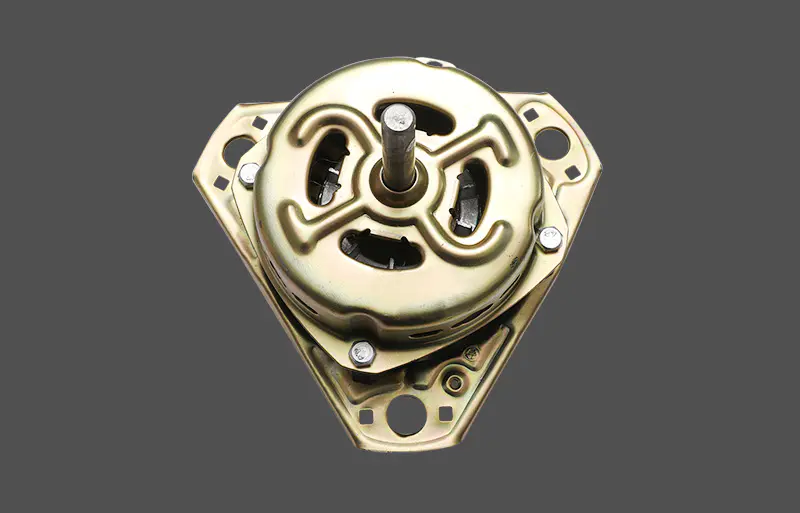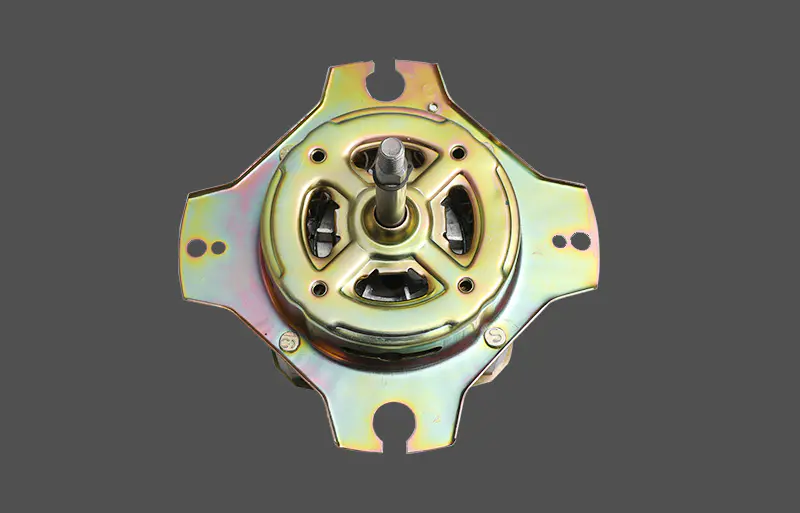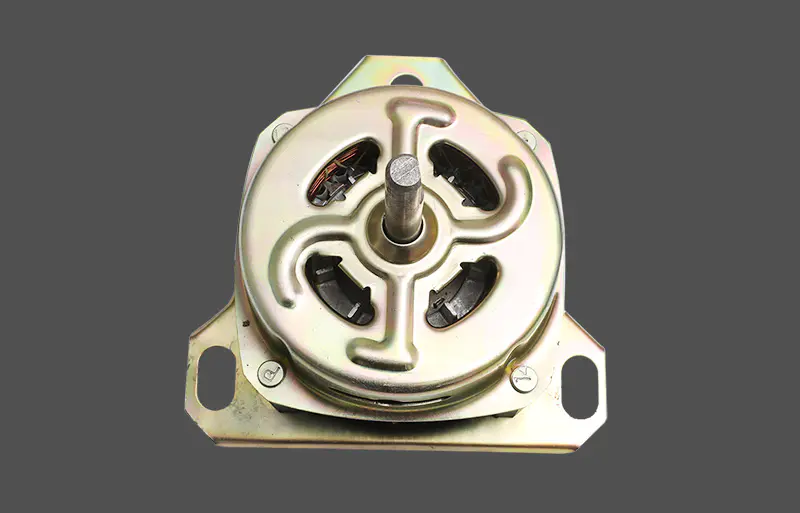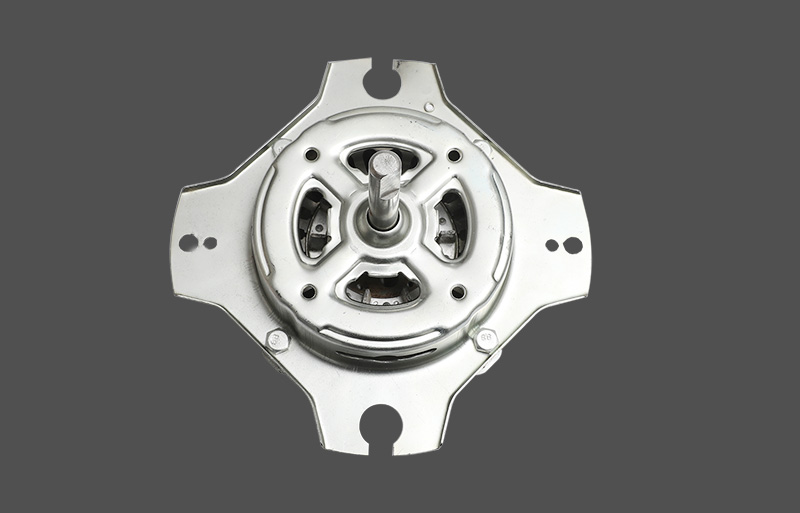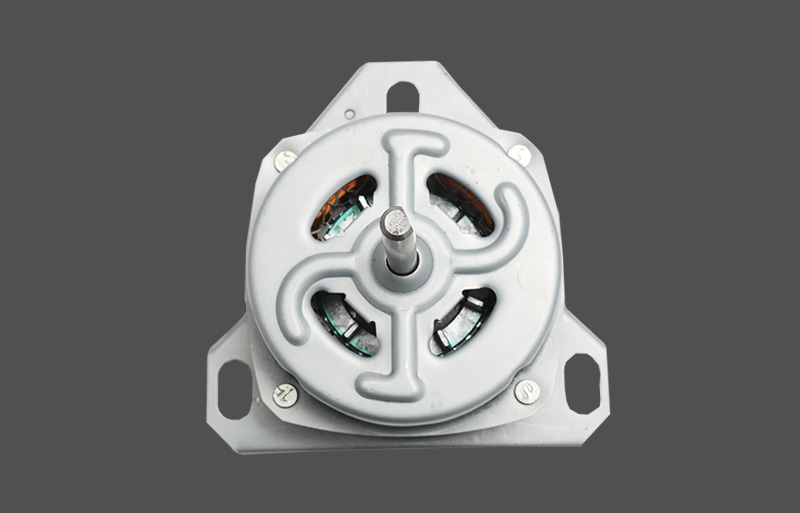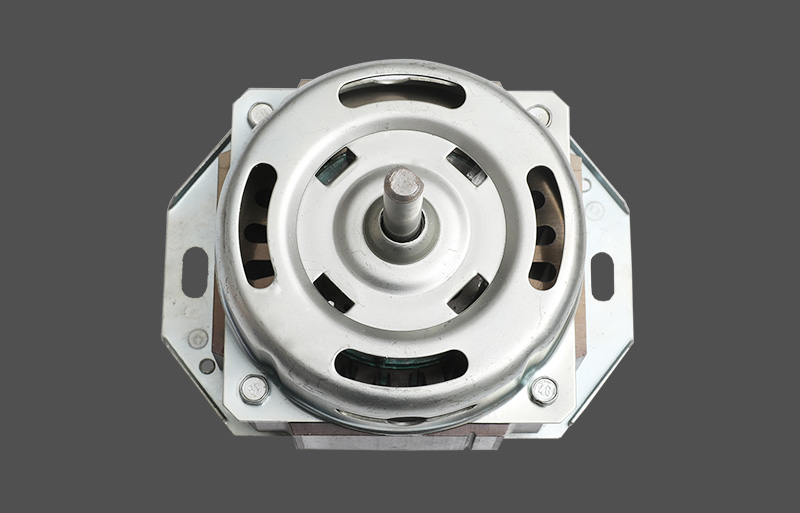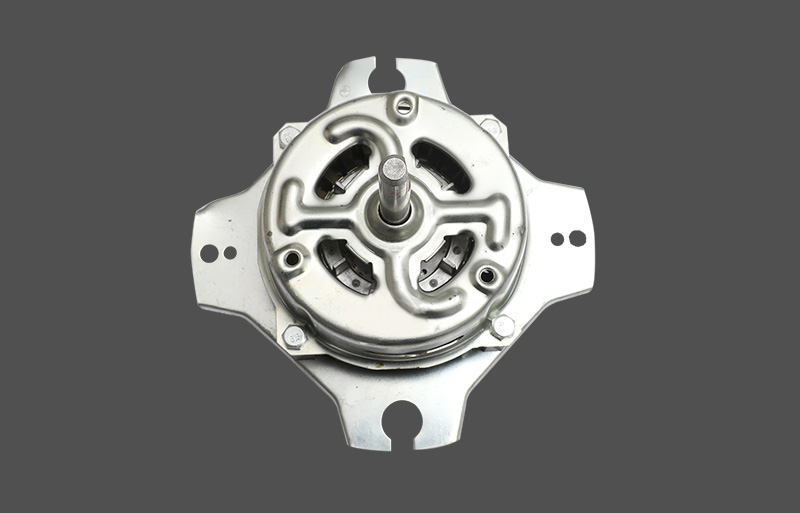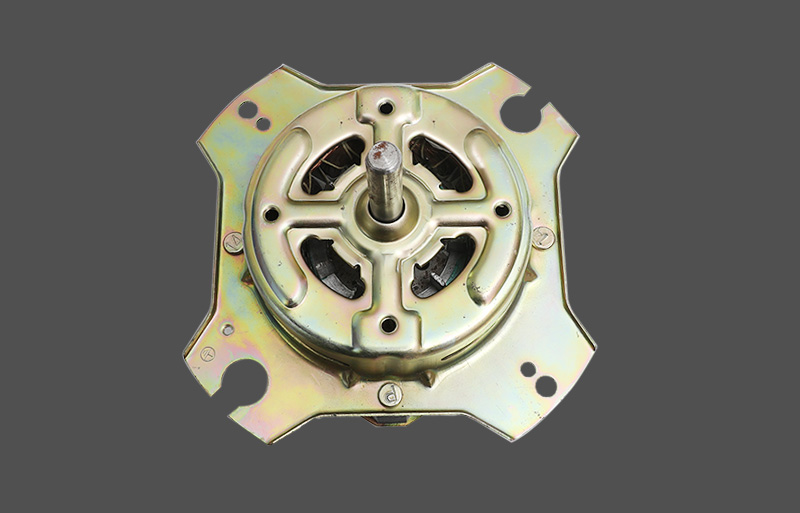1: The generator does not operate according to the specified technical conditions. If the stator voltage is too high, the iron loss increases; if the load current is too large, the copper loss of the stator winding increases;
If the frequency is too low, the cooling fan speed will be slow, which will affect the heat dissipation of the generator; the power factor is too low, which will increase the rotor excitation current and cause the rotor to generate heat. The indication of the monitoring instrument should be checked for properness. If it is not normal, the necessary adjustments and treatments must be carried out to operate the generator in accordance with the specified technical conditions.wall fan motor
2: The three-phase load current of the generator is unbalanced, and the overloaded one-phase winding will overheat; if the difference of the three-phase current exceeds 10% of the rated current, it is a serious 蛄 phase current imbalance, and the three-phase current imbalance will produce a negative The magnetic field is ordered to increase the loss, causing the components such as the pole winding and the ferrule to generate heat. The three-phase load should be adjusted to keep the phase currents as balanced as possible.
3: The air duct is blocked by dust and the ventilation is poor, which makes the generator difficult to dissipate heat. The dust and grease should be removed from the air duct and the air passage should be unobstructed.
4: The inlet air temperature is too high or the inlet water temperature is too high, and the cooler is blocked. The inlet or inlet temperature should be lowered to remove blockages from the cooler. Before the fault is not eliminated, the generator load should be limited to reduce the generator temperature.
5: If the bearing is too rich or too little, the grease should be added according to the regulations, usually 1/2~1/3 of the bearing chamber (the upper limit of the low speed, the lower limit of the high speed), and no more than the bearing 70% of the room is suitable.
6: Bearing wear. If the wear is not serious, the bearing is partially overheated; if the wear is severe, the stator and the rotor may be rubbed, causing the stator and the rotor to avoid overheating. The bearing should be inspected for noise. If the stator and rotor are found to be in friction, stop immediately to repair or replace the bearing.
7: The stator core insulation is damaged, causing short circuit between the sheets, causing the eddy current loss of the core to increase and heat, and the stator windings may be damaged in severe cases. It should be shut down immediately for maintenance.
8: The parallel wires of the stator winding are broken, so that the current of other wires increases and heats up. It should be shut down immediately for maintenance.
2. Generator neutral line has abnormal voltage to ground
1: Under normal circumstances, due to the influence of high harmonics or manufacturing process, the air gap under each magnetic pole is uneven and the magnetic potential is unequal, and the voltage is low. If the voltage is one to several volts, there is no danger. No need to deal with it.
2: The generator winding has short circuit or poor insulation to the ground, which causes the performance of electrical equipment and generator to deteriorate, and it is easy to generate heat. It should be repaired in time to avoid accidents.
3: Neutral line has no voltage to ground when no load, and voltage occurs when there is load. It is caused by three-phase unbalance, and the three-phase load should be adjusted to make it basically balanced.
3. Generator current is too large
1: If the load is too large, the load should be reduced.
2: If the transmission line is short-circuited or grounded, the line should be repaired and restored to normal after the fault is removed.
4. Generator terminal voltage is too high
1: The grid voltage of the generator parallel to the grid is too high, and the voltage of the parallel generator should be reduced.
2: The excitation of the excitation device causes over-excitation, and the excitation device should be repaired in time.
5. Low power
Due to insufficient compensation of the excitation and excitation of the voltage source of the excitation device, the excitation current required for the armature reaction cannot be provided, so that the generator terminal voltage is lower than the grid voltage and the rated reactive power cannot be delivered. The following measures should be taken:
1: Connect a three-phase voltage regulator between the generator and the excitation reactor to increase the voltage at the generator terminal and increase the magnetic potential of the excitation device.
2: Change the phase of the magnetomotive force of the excitation device and the voltage of the generator terminal to increase the total magnetomotive force. Several thousand ohms and 10W resistors can be connected in parallel at each end of the reactor.
3: Reduce the resistance of the varistor to increase the excitation current of the generator.
6. Stator winding insulation breakdown, short circuit
1: The stator winding is damp. For generators that have been deactivated for a long period of time or have been repaired for a long period of time, the insulation resistance should be measured before putting into operation. Those who fail are not allowed to put into operation. The damp generator should be dried.
2: The winding itself is defective or the repair process is improper, resulting in insulation breakdown or mechanical damage of the winding. Insulation materials should be selected according to the specified insulation grade, and the embedded windings and dipping paints should be strictly in accordance with the process requirements.
3: The winding is overheated. When the insulation is overheated, the insulation performance is lowered, and sometimes the insulation breakdown is quickly caused at a high temperature. Daily inspections should be strengthened to prevent overheating of various parts of the generator and damage the winding insulation.
4: Insulation aging. Generally, the generator runs for 15 to 20 years, and its winding insulation is aging, electrical properties change, and even insulation breakdown. To do the maintenance and preventive test of the generator, if the insulation is found to be unqualified, replace the defective winding insulation or replace the winding in time to prolong the service life of the generator.
5: The inside of the generator enters the metal foreign matter. After repairing the generator, do not leave the metal objects, parts or tools in the stator ;; tie the tying line of the rotor and fasten the end parts so as not to cause centrifugal force. Loose.
6: Excessive voltage breakdown:
1. The line is struck by lightning and the lightning protection is imperfect. Lightning protection facilities should be improved.
2. Misoperation, such as when the load is too high, the generator voltage is raised too high. The generator should be boosted in strict accordance with the operating procedures to prevent misuse.
3. The internal overvoltage of the generator, including the operating overvoltage, arc grounding overvoltage and resonant overvoltage, etc., should strengthen the winding insulation preventive test, and find and eliminate the defects in the stator winding insulation in time.
7: Stator core relaxation:
The core is not fastened due to improper manufacturing and assembly. If the entire core is slack, for small generators, two iron plates smaller than the inner diameter of the end of the stator winding can be used, and the studs can be put on and tightened. After the original shape is restored, the original clamping bolt of the iron core is tightened. If the local core is slack, first apply a silicon steel sheet paint between the slack sheets, and then insert a hard insulating material into the slack.
7. Short circuit between iron chips
1: The iron core lamination is slack. When the generator is running, the iron core vibrates and damages the insulation; if the insulation of the iron chip is damaged or the core is partially overheated and the insulation is aged, it is treated according to the method in the original plan.
2: There is a burr on the edge of the iron chip or mechanical damage during maintenance. Use a fine boring tool to remove the burrs, trim the damage, clean the surface, and then apply a layer of silicon steel paint.
3: If there is solder or copper short-circuited iron core, the metal welding joint should be scraped or chiseled to deal with the surface.
4: The arc is short-circuited by the winding, which may also cause the core to be short-circuited. The burned part should be removed with a chisel and the surface should be treated.
8. The generator loses residual magnetism and cannot generate electricity when starting.
1: The residual magnetism is often lost after the shutdown, because the material used for the magnetic pole of the exciter is close to the soft steel, and the residual magnetism is less. When there is no current in the field winding after the shutdown, the magnetic field disappears. A battery should be provided to magnetize before power generation.
2: The magnetic pole of the generator loses its magnetic force. It should be magnetized in the winding with a DC current (short time) larger than the rated current to recover enough residual magnetism.
9. Excitation reactor temperature of automatic excitation device is too high
1: The reactor coil is partially short-circuited and the reactor should be repaired.
2: The air gap of the magnetic circuit of the reactor is too large, and the air gap should be adjusted.
10. After the generator starts, the voltage does not rise.
1: The excitation circuit is disconnected, so that the voltage does not rise. Check the excitation circuit for broken wires and good contact.
2: The residual magnet disappears. If the exciter voltmeter does not indicate that the residual magnet disappears, the exciter should be magnetized.
3: The polarity of the field coil of the exciter is reversed, and its positive and negative connecting lines should be reversed.
4: In some tests during generator maintenance, the magnetic field coil is mistakenly connected to the reverse direct current, causing the residual magnet to disappear or reverse, and the magnetization should be re-energized.




